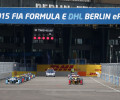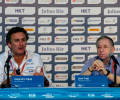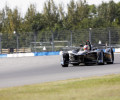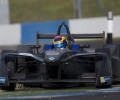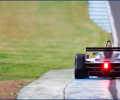FE - All that’s new in Formula E
Here’s everything that’s new for the third season of the championship for totally electric-powered single-seaters, that gets underway on Sunday 9 October in Hong Kong.
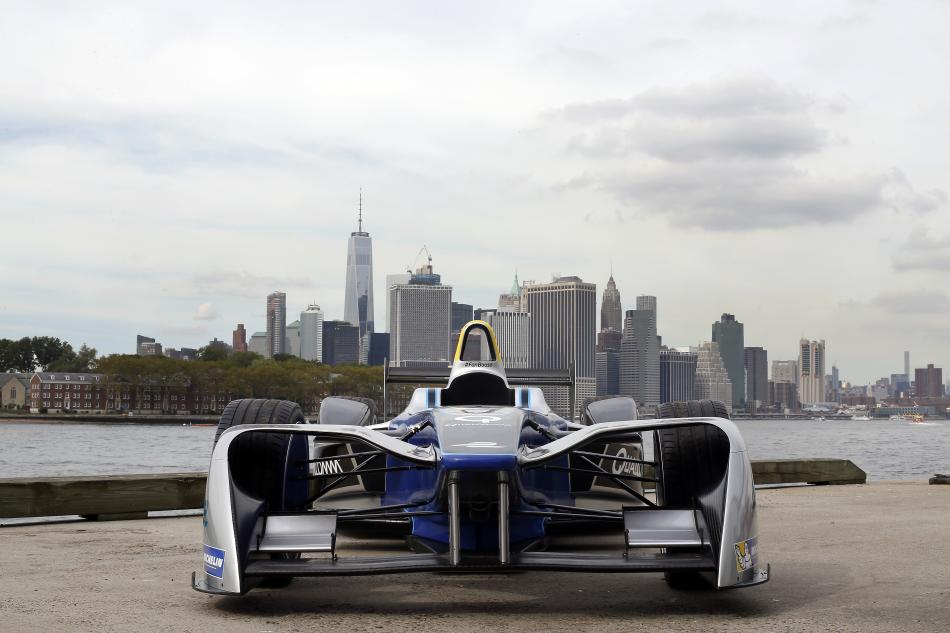
Drivers
Five drivers will be making their ePrix debut this Sunday in Hong Kong. The best known of them is definitely Argentina’s José Maria Lopez, who just a few weeks back secured his third title as FIA WTCC champion. Lopez will race alongside Sam Bird in the DS Virgin Racing team, which looks set to be one of the strongest in the field. Another FIA champion is Sweden’s Felix Rosenqvist, who took the title in the 2015 FIA Formula 3 European Championship. This season he is teamed up with one of the veterans of the series, the Mahindra team’s Nick Heidfeld. Rosenqvist has proved himself to be one of the most versatile drivers out there this year, racing in the single-seater Indy Light category, as well as at the wheel of GT cars in the Blancpain Series, while also competing in the DTM. Now it’s time for his Formula E debut.
With plenty of experience in both open and closed-wheel cars, Maro Engel will drive for the Venturi Formula E team, joining forces with Stephane Sarrazin. A works Mercedes driver, Engel is the FIA GT World Cup Champion, having won the Macao GT Grand Prix for the past two years. His best single-seater performance saw him finish second in the 2007 British Formula 3 Championship.
The Jaguar team is making its return to motor sport, with a pair of drivers both new to Formula E. Adam Carroll finally gets a race seat in the series, the Northern Ireland man having previously been a reserve, first for Mahindra and then for Team Aguri: his race record includes taking the 2008-09 A1 GP title, in Irish colours. He is teamed up with Mitch Evans, the New Zealander who won the 2015 GP3 Series and the 2010 and 2011 Toyota Racing Series.
Again on the entry list are the winners of the two previous Formula E championships, Sebastien Buemi (2015-16) and Nelson Piquet Jr. (2014-15,) while also back for another season is the Brazilian Lucas di Grassi, a front runner in both previous editions. The most significant driver change sees Jean-Eric Vergne switch from DS Virgin to the neophyte Chinese outfit, Techeetah.
Teams
The most important novelty of the third Formula E season is the arrival of Jaguar. The Jaguar Land Rover Group brand has chosen this, the first FIA series for totally electric-powered cars in which to make its return to racing for the first time in over a decade. It thus brings the number of teams taking part back up to ten, after the Trulli team had to pull out at the start of the second season.
There’s also the completely new name of Techeetah, which took over the license from Team Aguri. The new team, owned by China Media Capital, a public equity and venture capital firm based in Shanghai, is the only one to have opted to race with a customer power train, having acquired the one homologated by Renault. Not quite a new entry, but Faraday Futures, an advanced mobility company with headquarters in Silicon Valley and Southern California (USA,) has entered into a technology partnership with Dragon Racing.
Regulations
There are three key changes in the sporting regulations that come into effect for this third season. The first is that setting a fastest race lap is now worth just one point instead of two to a driver. When it comes to energy management, article 37.9 of the Sporting Regulations has been modified as follows:
The energy that can be supplied to the MGU (Motor Generator Unit) via the Rechargeble Energy Storage System (RESS) is defined in accordance to Article 7.6 of the Technical Regulations of the FIA Formula E Championship.
Once this value is reached the maximum power must linearly ramp down to 0 kW in 5 seconds rain light and ready to move light must blink a soon as the ramp down starts. After the car cross the pit in line for the first car or the finish line for the second car, the driver must be able to re-activate the MGU power to follow his race in the first case or go back to the pits in the second case.
This change has been introduced so that the spectators can instantly understand when there’s been a violation of the rule regarding how much energy can be used, without having to wait for a decision from the Stewards. It means that the Formula E cars will fall into line with cars that use combustion engines which have to stop trackside if they run out of fuel.
Finally, there’s been a 50% increase in the amount of energy available from the regeneration process, from 100 kW to 150kW. This means that the number of strategic possibilities opens up for the drivers, who can now store energy in a more efficient manner and for longer, partly thanks to an evolution of the standard battery produced by Williams Advanced Engineering.
Car
The chassis for all forty cars, as there are two per driver, remains the same this season and is still manufactured by Spark Racing Technology. The most important change concerns the front wing, which has a decidedly more aggressive and futuristic look than before. The change is not really based on any aerodynamic reasons, as it does not have much influence on the downforce level, but rather it has been done for aesthetic reasons, introduced by the FIA to stress that Formula E is not just a great environment in which to develop a completely electric powertrain with new battery technologies, but it is also a platform for experimenting with innovative solutions when it comes to designing single-seater racing cars.
The teams are also running a new steering wheel with increased functionality in order for them to take full advantage of the strategic options available to them. This year, Michelin has introduced an evolution of the existing all-weather tyre, which offers less rolling resistance, is lighter and therefore allows better use of the energy available. Drivers will also find it easier to get the tyres up to operating temperature, without in any way compromising consistency in terms of performance.
Constructors
Nine constructors have homologated an original powertrain for this third Formula E season. The only one to supply two teams is Renault, winners of the Constructors’ title in season 2, who provide engines to their own official team and, as previously mentioned, the Chinese Techeetah outfit.
These are the changes for the season that’s about to start, however those that are yet to appear on the horizon are even more significant. BMW, which has been a sponsor of the series right from the start, supplying the Safety Car and Medical Car, has announced a partnership with Andretti that could see it come in as an official team as from season 5. Audi, which has been tied in with the ABT team right from the start and as a supporter of one of its drivers, in the shape of Lucas di Grassi, has announced its intention to gradually strengthen its technical collaboration with Schaeffler. Furthermore its four-ringed emblem has already been proudly on display on the team livery and the drivers’ and team members’ clothing since the Donington test. Finally, just a few days ago, came the announcement that Mercedes has signed an option on one of the two new entries that will be available as from season 5.
So there’s plenty going on at the moment in this championship that only saw the light of day a little over two years ago, thus confirming the foresight shown by the FIA and Formula E in creating this series for totally electrically powered cars.
Season 5
Season 3 is only just about to get underway but there’s already a great deal of interest in number 5, which will start towards the end of 2018. This will be the season in which drivers will switch from using two cars per race to just one. In recent months, the FIA put out to tender the supply of a battery capable of allowing a car to run for an entire race and no less than nine proposals were presented.
At the end of the selection process, involving independent experts, the FIA World Motor Sport Council chose McLaren Applied Technologies to be the sole supplier of a standard battery for the 2018/19 and 2019/20 seasons. The decision to nominate a supplier for just two seasons was taken in light of the rapid development of current battery technology.
In fact, it’s noticeable that right from season 2, competition between the various powertrain suppliers has seen cars capable of going slightly further in each race than they managed in season 1, a clear sign that the relevant technology is getting more efficient. Season 5 will also mark the arrival of a new chassis, again designed by Spark Racing Technologies. The French company has won the tender to supply the chassis to competing teams at least to the end of the 2020/21 season.

 Facebook
Facebook Twitter
Twitter
